Notes
Where Things are Pointed in Egypt (and Have Been Since the Coup)
July 5, 2013
July 27, 2013
August 14th, 2003
Looking all the way back to six weeks ago when people in the West were softly murmuring whether to call it a “coup,” or not, it’s now clear the overthrow launched Egypt into a deathly period. Since then, these images by Yuri Kozyrev taken in Tahrir Square on July 5th; Mosa’ab Elshamy’s photo taken on July 27 in Rabaa Square in Cairo; and Narciso Contreras’ photo of the wounded near the Rabaa al-Adawiya mosque in Cairo’s Nasr City district last week, on August 14th, have captured surprisingly similar gestures.
To the extent photographs can foreshadow reality, these series of hands — as symbol of the martyr, as evidential stain, and as steadfast defiance — constitute a deadly arc. Beyond the media’s obsession with blood, the fact that each spasm of confrontation between the military and Islamists has yielded a prominent newswire picture with a related gesture is not eerie so much it is demonstrates a sickening continuity with almost an expectation of the next digit in the air.
(photo 1: Yuri Kozyrev—NOOR for TIME. From the Lightbox slideshow: Continuing Chaos in Tahrir Square: Photographs by Yuri Kozyrev caption: July 5, 2013. Backers of ousted President Mohamed Morsi helped a man (not pictured) who was shot by the military when he crossed the road to try to put a poster of Morsi on the barbed wire next to the Republican Guard barracks in Cairo. photo 2: Mosa’ab Elshamy. From a slideshow and post about the photographer’s photos from Cairo caption: A Morsi supporter transporting injured protesters shows his bloodied hand. July 27, 2013. photo 3: Narciso Contreras for The New York Times. Supporters of the ousted president, Mohamed Morsi, tended to the wounded near the Rabaa al-Adawiya mosque in the Nasr City district of Cairo. From the NYT Slideshow – A Bloody Crackdown in Egypt. caption: Supporters of the ousted president, Mohamed Morsi, tended to the wounded near the Rabaa al-Adawiya mosque in the Nasr City district of Cairo.)
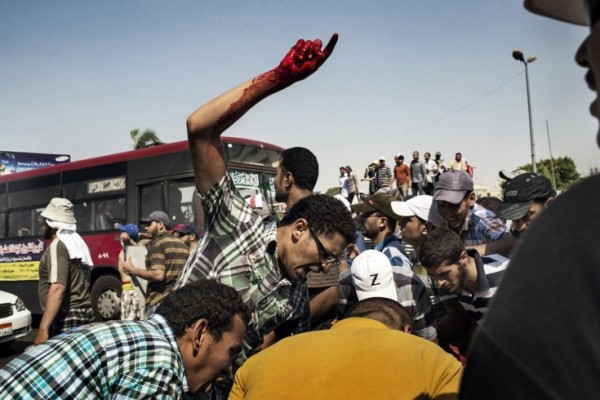
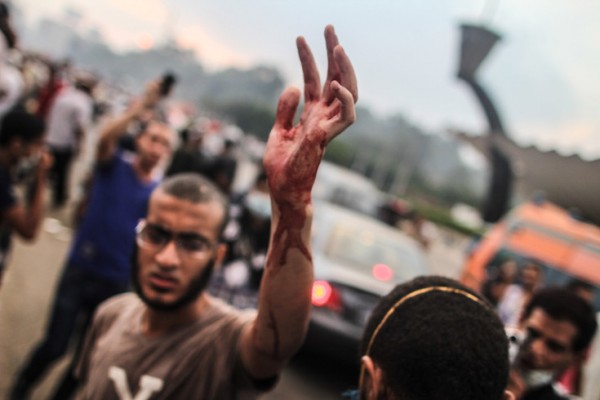
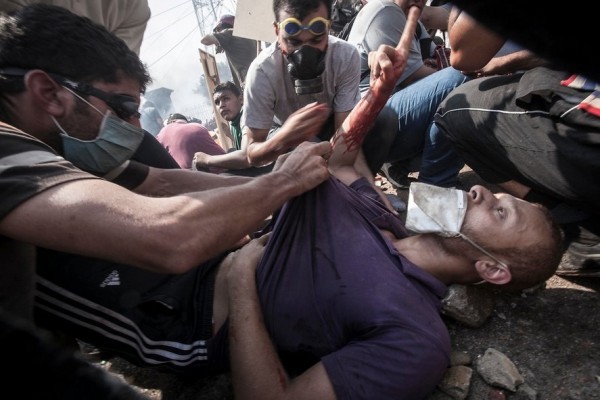
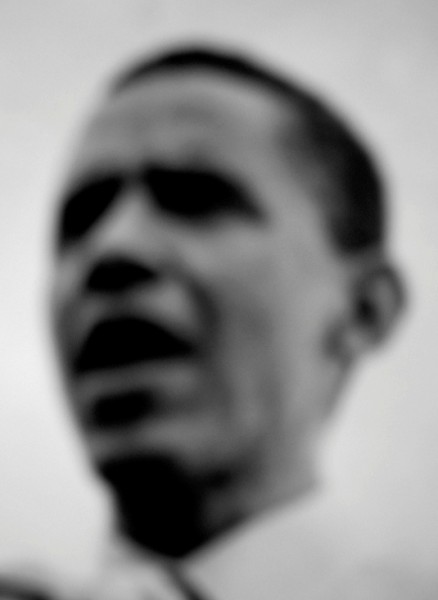
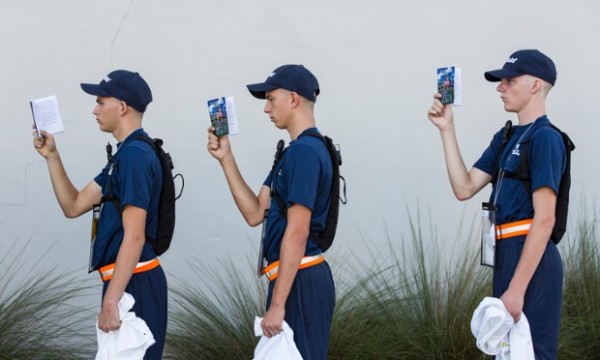
Reactions
Comments Powered by Disqus